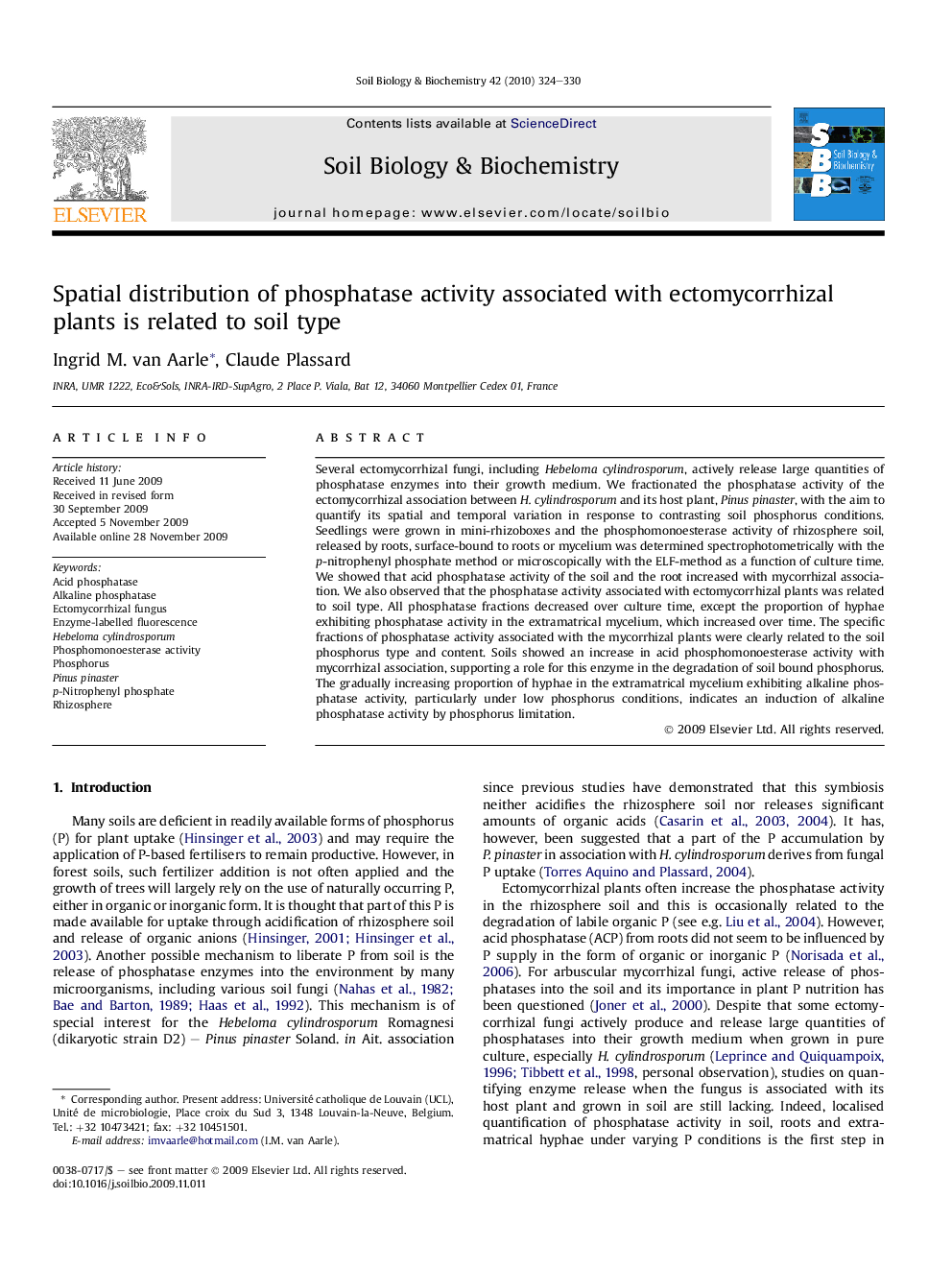| کد مقاله | کد نشریه | سال انتشار | مقاله انگلیسی | نسخه تمام متن |
|---|---|---|---|---|
| 2025142 | 1069982 | 2010 | 7 صفحه PDF | دانلود رایگان |

Several ectomycorrhizal fungi, including Hebeloma cylindrosporum, actively release large quantities of phosphatase enzymes into their growth medium. We fractionated the phosphatase activity of the ectomycorrhizal association between H. cylindrosporum and its host plant, Pinus pinaster, with the aim to quantify its spatial and temporal variation in response to contrasting soil phosphorus conditions. Seedlings were grown in mini-rhizoboxes and the phosphomonoesterase activity of rhizosphere soil, released by roots, surface-bound to roots or mycelium was determined spectrophotometrically with the p-nitrophenyl phosphate method or microscopically with the ELF-method as a function of culture time. We showed that acid phosphatase activity of the soil and the root increased with mycorrhizal association. We also observed that the phosphatase activity associated with ectomycorrhizal plants was related to soil type. All phosphatase fractions decreased over culture time, except the proportion of hyphae exhibiting phosphatase activity in the extramatrical mycelium, which increased over time. The specific fractions of phosphatase activity associated with the mycorrhizal plants were clearly related to the soil phosphorus type and content. Soils showed an increase in acid phosphomonoesterase activity with mycorrhizal association, supporting a role for this enzyme in the degradation of soil bound phosphorus. The gradually increasing proportion of hyphae in the extramatrical mycelium exhibiting alkaline phosphatase activity, particularly under low phosphorus conditions, indicates an induction of alkaline phosphatase activity by phosphorus limitation.
Journal: Soil Biology and Biochemistry - Volume 42, Issue 2, February 2010, Pages 324–330